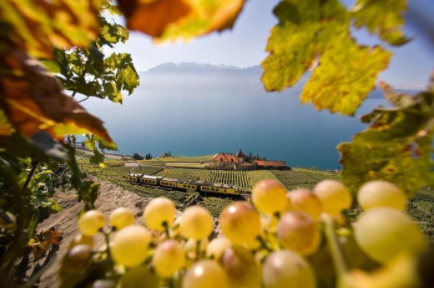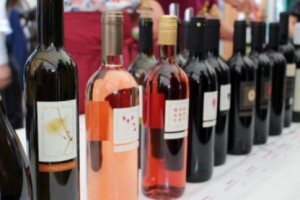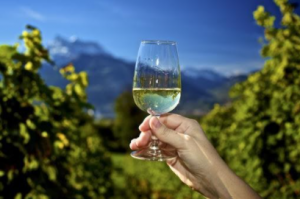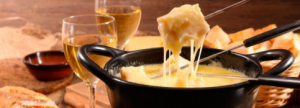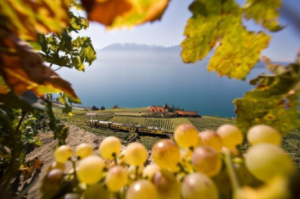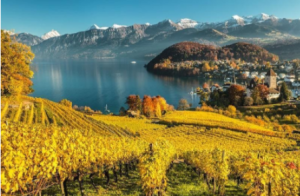In Switzerland, they not only enjoy iconic delicious dishes such as fondue and raclette, high-quality cheeses and the world-famous Swiss chocolate. A lesser known fact is that the people of the Alpine country have another reason to be proud. And these are Swiss wines . The national assortment is simply amazing, and every bunch of grapes is grown in the ecologically clean lands of the alpine country.
Swiss wine production complies with the highest quality standards and therefore, if you have not yet tasted them, you must quickly correct this omission.
Swiss grape varieties
In Switzerland more than 50 different grape varieties are grown, and according to some sources there are many more, on an area of about 15,000 hectares , providing a wide range of local wines. The different climate in different parts of the country makes it possible to produce both excellent white and red wines. In the lands of present-day Switzerland, grapes began to be grown as early as the Roman era.
Until now, winemaking has been a traditional activity for a number of cantons such as Geneva, Neuchatel, Ticino, Valais and Vaud (mainly southern and western regions).
The grape varieties grown in Switzerland can be divided into three groups:
- local
- imported
- newly created
The local varieties include Human Blanche, Amin, Human Rouge, Bondola, Cornalen and others.
Perhaps the most famous local variety in Switzerland is the chassis, which is also grown in neighboring France and Germany . The variety is believed to have originated from ancient vineyards on the shores of Lake Geneva, although other countries claim its homeland. The areas with this variety are not large, but can be found in almost all regions of Switzerland – Vaud, Valais, Geneva, Neuchatel and others.
Chassle wines are very fresh and delicate. They are most often dry wines with a moderate amount of alcohol. When aged, they develop a wonderful bouquet with hints of honey, caramel, dried apricots, cinnamon, curry and truffle.
Among the local varieties it is worth noting Petit Arvin from the Vale region. Connoisseurs believe that it is one of the best for the production of white wines. Dry and sparkling wines are produced from it, but from the overripe Petit arvin grapes excellent sweet wines are also obtained.
The imported varieties that the Swiss rely on are Chardonnay, Pinot Gris, Silvaner, Pinot Noir, Merlot, Syrah, Game, etc.
The newly created varieties used are Riesling Silvaner, better known in Germany as Müller-Thurgau, Diviko, Garanoar, Doral, Galota, Cabernet Jurassic, Gamare , and others.
Distinctive features of Swiss wines
Swiss quality has already become an invariable rule for the national industry Wine production is no exception. The confederation has its own system for controlling wine production.
Swiss wines are divided into three categories:
- Category 1: the origin and quality of the wines are controlled by indicating the name of the region in which the grapes are grown and placing a special mark.
- Category 2: local wine with an indication of the region of origin (Vin de Pays).
- Category 3 : ordinary table wines without indication of origin.
Switzerland has 6 main wine regions, which have different climates and soils. This makes the wines very diverse. The country used to be better known for its white wines, but now the production of reds exceeds half of the quantities.
Having noted how diverse and high-quality Swiss wines are, which countries do you consider to be their main consumers. The answer is quite clear: there are none. The Swiss love their wine and prefer to consume it themselves (and not only drink, but also use it to make the iconic fondue). Less than 1% of all production is exported.
First, we must admit that Swiss wine is very expensive if you are not a Swiss consumer. However, do not accept that Swiss wines will not be able to compete on the international market. However, they are, albeit slowly, beginning to reach connoisseurs in other countries. Fläsch Winery , for example, exports 30% of its harvest abroad each year.
The Swiss wine giant Provins from the canton of Valais also sells some of its products abroad. It is possible that in the near future Swiss wine will gain popularity as Swiss chocolate and traditional Swiss dishes. And why not? There is nothing better for a fondue with cheese or raclette than cold Swiss white wine.
Wine regions of Switzerland
Today, Swiss wine is produced in almost all regions of the Alpine country: from the southwest (cantons of Valais, Vaud, Geneva and Ticino) to the northeast (cantons of Argau, Zurich, Schaffhausen, Lucerne). Let’s take a closer look at some of the important wine regions.
Canton of Valais
The canton of Valais is rightly considered to be the largest wine-growing region in Switzerland because it has almost 5,000 hectares of vineyards. Not surprisingly, local winemakers boast the widest variety of varieties. The vineyards in Valais are located at 800 – 1,100 meters above sea level, which makes them the most the highest in the world.
The warm dry alpine winds, the mild southern climate and the proximity to Lake Geneva are important prerequisites for the production of Vale. The canton of Valais boasts over 50 types of wine.
The most popular local grape varieties are:
- Pinot Noir (red)
- Chasselas (white)
- Gamay (red)
Varieties such as Fendant (also known as Chassela white), Pinot noir and Gamay date from the 19th century, and white grapes Humagne blanc and Resi (Rèze) from 1313 Another pride of the canton of Valais is white Himbercha which is produced only there.
Canton Vaud
The French-speaking canton of Vaud is the second largest wine-growing region in Switzerland. Local wine production dates back to the Middle Ages during the time of the Cistercian monks, who left behind a rich heritage.
The terraced vineyards in the Lavo wine region, located on Lake Geneva in the canton of Vaud, are included in the UNESCO World Heritage List.
Over 65% of the vineyards in the canton of Vaud are planted with white grapes. The business card of the region is the Chassell variety. Local winemakers can also boast of wines from Pinot Noir, Gamay, Chardonnay, Pinot Blanc, Gamare and Garanoar.
Canton of Geneva
The French-speaking canton of Geneva is the third largest wine region in Switzerland. Chassis is the main specialty of wine producers in Geneva.
This variety represents almost 40 percent of the local vineyards. It is followed by Gamay and Pinot Noir. Local winemakers also boast white wines from Riesling Silvaner, Chardonnay, Sauvignon Blanc and others . The list of local red wines includes Merlot, Gamaret, Garanoar and less often Syrah.
Canton of Ticino
The southern Italian-speaking canton of Ticino is also one of the most important for Swiss winemaking. There are not so many local vineyards, but there are about 4,000 wineries in the area . Distinctive for the canton of Ticino is the Merlot variety, but it is also grown Pinot Noir, Cabernet Sauvignon and Cabernet Franc, and from white Chardonnay, Chaslaux and Sauvignon.
Canton of Zurich
The financial capital of Switzerland – Zurich , is the largest wine-growing region in the German-speaking part of the confederation. Winemakers in Zurich prefer red wines. The most popular variety is Pinot Noir , but local growers also grow Gamaret and Garanoar.
The leader among the local white varieties is Riesling Silvaner , but Chardonnay, Pinot Gris, Pinot Blanc, Sauvignon Blanc are also grown.
The wine-growing region of Schaffhausen is also proud of its achievements with its more than 30 types of wine, the canton of Aargau, which has 750 wineries, and the canton of Bern, where first-class grapes are grown on the shores of Lake Thun .


